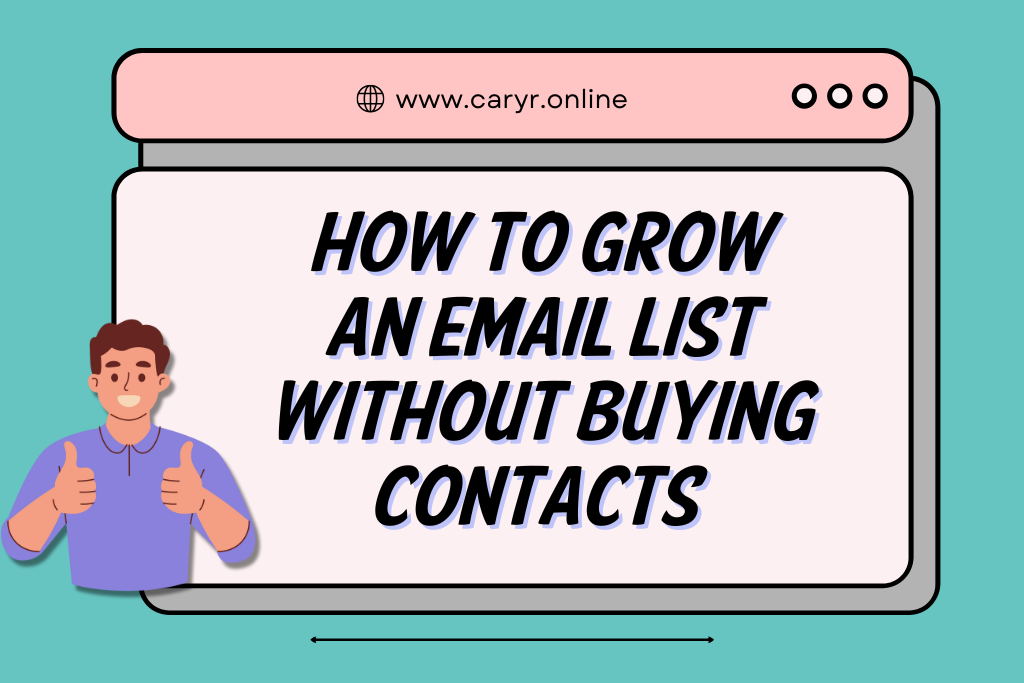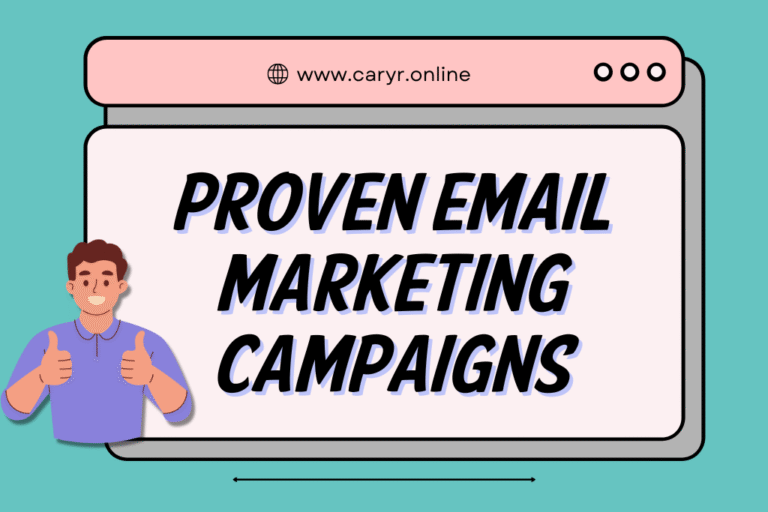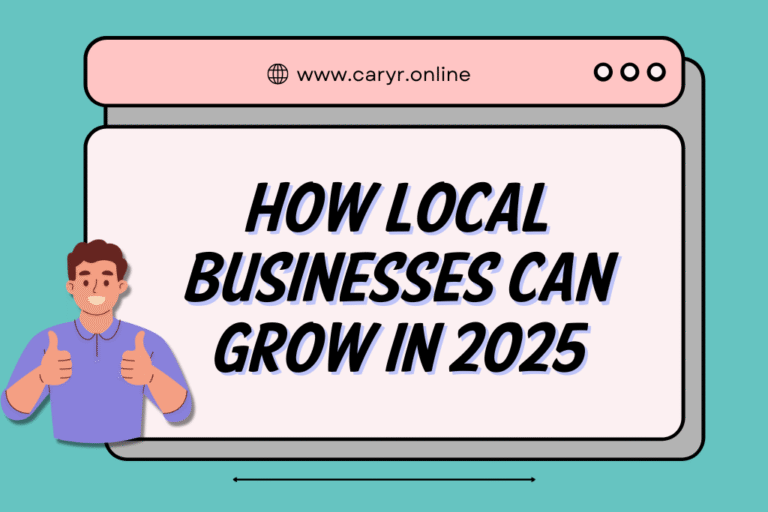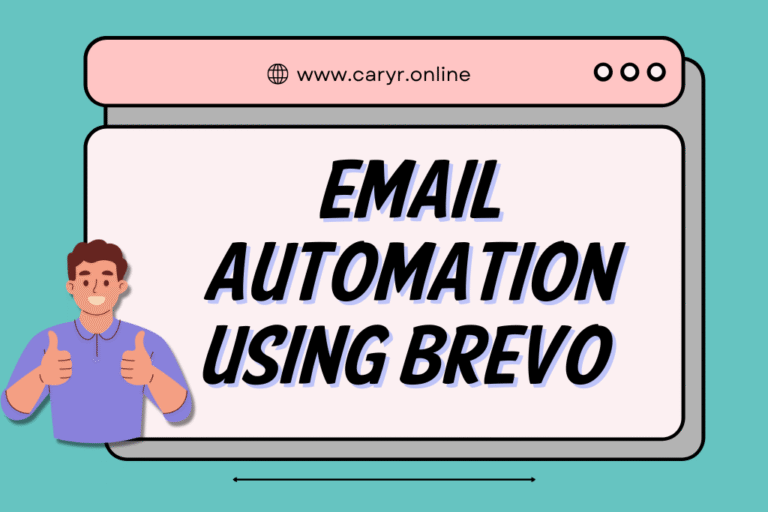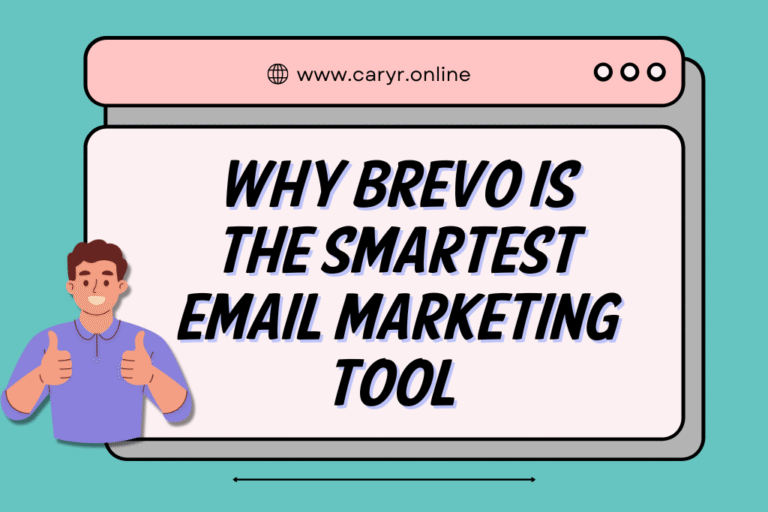How to Grow an Email List Without Buying Contacts in 2025
Growing an email list without spending money on contacts is not only possible—it’s the smart way to build long-term, profitable relationships with your audience. Buying email lists might seem like a shortcut, but it can seriously damage your brand reputation, get you flagged as spam, and even put you at risk of violating privacy laws like GDPR. The truth is, with the right strategies, you can attract people who actually want to hear from you. That’s the golden ticket in today’s digital marketing world. (How to Grow an Email List Without Buying Contacts)
In this article, you’ll get a step-by-step guide on how to grow your email list organically. We’re talking real people, real strategies, and real results. We’ll cover everything from creating juicy lead magnets to optimizing your website, using social media, hosting events, gamification, and even how to keep your list clean and compliant with laws. Let’s get right into it.
Introduction to Organic Email List Building
Why Email Marketing Still Matters in 2025
You might be wondering, with all the shiny new platforms like TikTok and Threads, does email marketing still hold weight? Absolutely. In fact, email marketing remains one of the highest ROI channels, generating around $36 for every $1 spent. Why? Because it allows direct, personalized communication. Unlike social media algorithms that decide who sees your post, emails land straight in your subscribers’ inboxes.
People check their email multiple times a day. More importantly, emails are permission-based. If someone opts into your list, they’re already showing interest in what you have to say. That’s a level of trust and intent you just can’t get with most paid ads or social media impressions. And in a world increasingly skeptical of digital advertising, authenticity wins every time.
The Downside of Buying Email Lists
Let’s get real here—buying email lists is like crashing someone’s party uninvited. You might be in the room, but nobody wants you there. These contacts haven’t agreed to receive messages from you, which means your open rates will tank, your spam complaints will rise, and your email reputation could be permanently damaged.
Worse yet, if you’re caught violating email marketing laws like GDPR or CAN-SPAM, you could face serious fines. Bought lists often contain outdated or fake emails, which only hurts your deliverability rate. Plus, most reputable email marketing platforms like Mailchimp, ConvertKit, and ActiveCampaign ban purchased lists altogether. In short: it’s not worth it.
Understanding Your Target Audience
Building a Customer Persona
Before you start throwing up opt-in forms and lead magnets, you need to know who you’re talking to. Building a customer persona means digging deep into the traits, behaviors, needs, and pain points of your ideal subscriber. What do they care about? What keeps them up at night? What’s the transformation they’re looking for?
Start by analyzing your existing audience (if you have one) or conducting surveys, interviews, and market research. Look at demographics like age, gender, location, and job title. Then go further into psychographics—values, hobbies, challenges, and online behavior.
Use tools like Google Analytics, Facebook Audience Insights, and even Reddit or Quora threads in your niche to gather data. Once you have a clear persona, everything else—your lead magnet, email content, tone of voice—will be laser-focused and more effective.
Mapping the Customer Journey
Every great email strategy begins with understanding the journey your customer takes—from stranger to loyal fan. That’s where journey mapping comes in. Think about the steps: Awareness → Interest → Consideration → Conversion → Retention → Advocacy.
At each stage, your audience needs different information. During the awareness phase, they might not even know they have a problem. In the interest stage, they’re seeking more information. By the time they reach the conversion stage, they’re ready to act—if you’ve built enough trust.
Your opt-in content should align with these stages. For example, a blog post or checklist might appeal to those in the awareness phase, while a free trial or case study is better for those close to buying. The more tailored your content is, the better your conversion rates will be.
How to Grow an Email List Without Buying Contacts
Crafting Irresistible Lead Magnets
Types of Lead Magnets That Work
A lead magnet is something valuable you give away for free in exchange for an email address. But not just any freebie will do. It needs to solve a specific problem for your audience quickly and effectively. The best lead magnets are simple, actionable, and instantly rewarding.
Here are some high-performing examples:
- Ebooks and Guides – Offer deep value in a downloadable PDF.
- Checklists and Cheat Sheets – Easy to digest and apply instantly.
- Webinars or Free Courses – Great for high-ticket offers and services.
- Discounts and Coupons – Ideal for eCommerce brands.
- Quizzes or Assessments – Interactive and highly engaging.
The key is to match the magnet to your audience’s needs. If you’re a fitness coach, a 7-day meal plan is way more appealing than a generic ebook about wellness. Know your niche, and tailor your offer accordingly.
How to Create High-Converting Lead Magnets
Creating a lead magnet is only half the battle—making sure people actually sign up for it is where the magic happens. Start with a catchy headline that clearly states the benefit. Think “Free 5-Day Challenge to Triple Your Energy” instead of “Health Guide.” Use action-oriented language and be super specific about the results.
Design matters, too. Use tools like Canva or Adobe Express to make your lead magnet visually appealing. Break content into bite-sized chunks, use bullet points, and add visuals to keep readers engaged.
Once your lead magnet is ready, promote it everywhere—on your blog, in social media bios, inside popups, at the end of YouTube videos, and even in your email signature. The more eyeballs, the better your chances of growing that list.
Optimizing Your Website for Email Capture
Where to Place Signup Forms Strategically
Your website is your home base, so make it easy for visitors to sign up. That means placing opt-in forms in multiple, strategic locations—not just a tiny box at the bottom of the page.
Here’s where to put them:
- Homepage above the fold
- In the sidebar or footer
- As an exit-intent popup
- On a dedicated landing page
- After blog posts or within content
- Inside a sticky header or floating bar
Each of these locations serves a different purpose. For example, a welcome popup can grab attention fast, while an embedded form within a blog post feels more organic. Test different placements to see what gets the best response from your audience.
Best Practices for Form Design and Copy
Nobody wants to give out their email for nothing, especially if your form looks sketchy. Keep your design clean, clutter-free, and mobile-friendly. Ask for as little information as possible—usually just a first name and email address is plenty.
Use persuasive copy that emphasizes the benefit. Instead of “Sign Up for Updates,” try “Get Your Free Marketing Toolkit Now.” Add trust signals like “No Spam, Ever” or “Join 10,000+ Happy Subscribers.”
A/B test different headlines, button text, and form layouts regularly. Even small tweaks can make a big impact on conversion rates.

